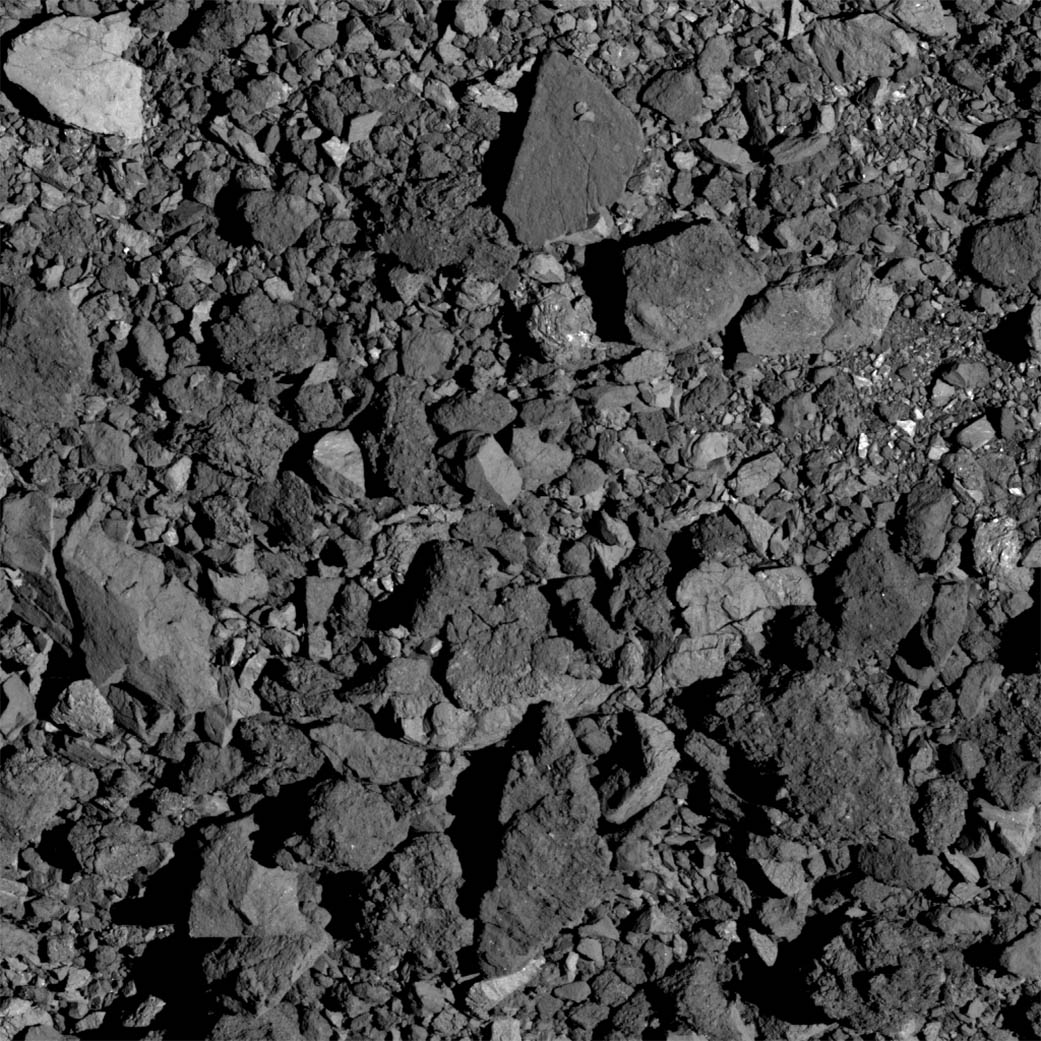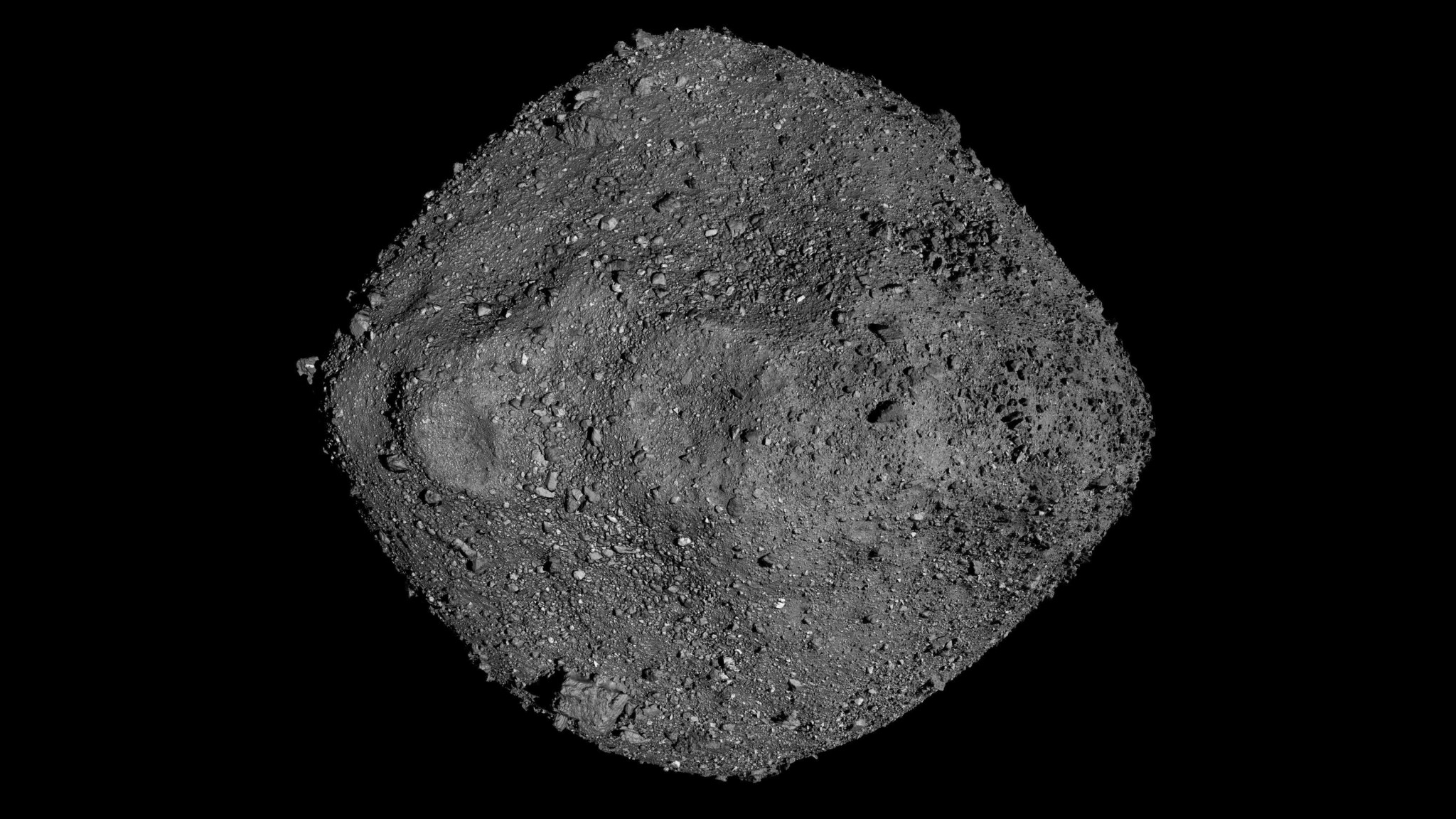Scientists thought Bennu’s surface was like a sandy beach, abundant in fine sand and pebbles, which would have been perfect for collecting samples. Past telescope observations from Earth had suggested the presence of large swaths of fine-grained material smaller than a few centimeters called fine regolith. But when NASA’s OSIRIS-REx mission arrived at Bennu in late 2018, the mission saw a surface covered in boulders. The mysterious lack of fine regolith became even more surprising when mission scientists observed evidence of processes potentially capable of grinding boulders into fine regolith.
New research, published in Nature and led by Saverio Cambioni, of the University of Arizona, used machine learning and surface temperature data to solve the mystery. Cambioni conducted the research at the university’s Lunar and Planetary Laboratory. He and his colleagues ultimately found that Bennu’s highly porous rocks are responsible for the surface’s surprising lack of fine regolith.
“The ‘REx’ in OSIRIS-REx stands for Regolith Explorer, so mapping and characterizing the surface of the asteroid was a main goal,” said study co-author and OSIRIS-REx Principal Investigator Dante Lauretta, a Regents Professor of Planetary Sciences at the University of Arizona. “The spacecraft collected very high-resolution data for Bennu’s entire surface, which was down to 3 millimeters per pixel at some locations. Beyond scientific interest, the lack of fine regolith became a challenge for the mission itself, because the spacecraft was designed to collect such material.”
A Rocky Start and Solid Answers
“When the first images of Bennu came in, we noted some areas where the resolution was not high enough to see whether there were small rocks or fine regolith. We started using our machine learning approach to distinguish fine regolith from rocks using thermal emission (infrared) data,” Cambioni said.
The thermal emission from fine regolith is different from that of larger rocks, because the size of its particles controls the former, while the latter is controlled by rock porosity. The team first built a library of thermal emissions associated with fine regolith mixed in different proportions with rocks of various porosity. Next, they used machine-learning techniques to teach a computer how to “connect the dots” between the examples, Cambioni said. They analyzed 122 areas on the surface of Bennu, that were observed both during the day and the night.
“Only machine learning could efficiently explore a dataset this large,” Cambioni said.
Cambioni and his collaborators found something surprising when the data analysis was completed: the fine regolith was not randomly distributed on Bennu. Instead, it was up to several tens of percent in those very few areas where rocks are non-porous, and systematically lower where rocks have higher porosity, which is most of the surface.

The team concluded that very little fine regolith is produced from Bennu’s highly porous rocks because these are compressed rather than fragmented by meteoroid impacts. Like a sponge, the voids within rocks cushion the blow from incoming meteoroids. These findings are also in agreement with laboratory experiments from other research groups.
“Basically, a big part of the energy of the impact goes into crushing the pores restricting the fragmentation of the rocks and the production of new fine regolith,” said study co-author Chrysa Avdellidou, a postdoctoral researcher at the French National Centre for Scientific Research (CNRS) – Lagrange Laboratory of the Côte d’Azur Observatory and University in France. Additionally, Cambioni and colleagues showed that cracking caused by the heating and cooling of Bennu’s rocks as the asteroid rotates through day and night proceeds more slowly in porous rocks than in denser rocks, further frustrating the production of fine regolith.
“When OSIRIS-REx delivers its sample of Bennu (to Earth) in September 2023, scientists will be able to study the samples in detail,” said Jason Dworkin, OSIRIS-REx project scientist at NASA’s Goddard Space Flight Center in Greenbelt, Maryland. “This includes testing the physical properties of the rocks to verify this study.”
Other missions have evidence to support the team’s findings. The Japan Aerospace and Exploration Agency (JAXA) Hayabusa2 mission to Ryugu, a carbonaceous asteroid like Bennu, found that Ryugu also lacks fine regolith and has high-porosity rocks. Conversely, JAXA’s Hayabusa mission in 2005 revealed abundant fine regolith on the surface of asteroid Itokawa, an S-type asteroid with rocks of a different composition than Bennu and Ryugu. A previous study also from Cambioni and colleagues provided evidence that its rocks are less porous than Bennu’s and Ryugu’s using observations from Earth.
“For decades, astronomers disputed that small, near-Earth asteroids could have bare-rock surfaces,” said study co-author Marco Delbo, research director with CNRS, also at the Lagrange Laboratory. “The most indisputable evidence that these small asteroids could have substantial fine regolith emerged when spacecraft visited S-type asteroids Eros and Itokawa in the 2000s and found fine regolith on their surfaces.”
The team predicts that large swaths of fine regolith should be uncommon on carbonaceous asteroids, the most common of all asteroid types observed, and which the team expects to have high-porosity rocks like Bennu. By contrast, they predict terrains rich in fine regolith to be common on S-type asteroids, the second-most populous type of asteroids observed in the solar system, which they expect to have denser, less porous rocks than carbonaceous asteroids.
“This is an important piece in the puzzle of what drives the diversity of asteroids’ surfaces,” Cambioni said. “Asteroids are thought to be relics of the early solar system, so understanding the evolution they have undergone in time is crucial to comprehend how the solar system formed and evolved. Now that we know this fundamental difference between carbonaceous and S-type asteroids, future teams can better prepare sample collection missions depending on the nature of the target asteroid.”
Cambioni is continuing his research on planetary diversity as a distinguished postdoctoral fellow in the Department of Earth, Atmospheric and Planetary Sciences at the Massachusetts Institute of Technology.
The University of Arizona leads the OSIRIS-REx science team and the mission’s science observation planning and data processing. NASA’s Goddard Space Flight Center in Greenbelt, Maryland, provides overall mission management, systems engineering, and the safety and mission assurance for OSIRIS-REx. Lockheed Martin Space in Littleton, Colorado, built the spacecraft and provides flight operations. Goddard and KinetX Aerospace are responsible for navigating the OSIRIS-REx spacecraft. OSIRIS-REx is the third mission in NASA’s New Frontiers Program, managed by NASA’s Marshall Space Flight Center in Huntsville, Alabama, for the agency’s Science Mission Directorate at NASA Headquarters in Washington, D.C.
University of Arizona Press Release: Highly Porous Rocks Responsible for Bennu’s Surprisingly Craggy Surface
Nature: Fine-regolith production on asteroids controlled by rock porosity
By Mikayla Mace Kelley
The University of Arizona



























